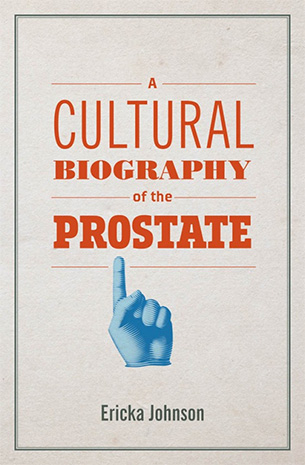The Paradox of a Man’s Most-Feared Test, the PSA

“Should I get a PSA test?” During the course of researching my book, I heard this question a lot. Even when it wasn’t asked straight out, I could feel it in the air, hovering above my conversations with men about their prostates.
“Is the test any good? What sort of number should I have? What sort of number do I want to have? Could I have cancer, or is it a false positive? Do I really need to take the test?” These questions were often asked through a haze of worry — so much so that I started to think of PSA as prostate-specific angst instead of prostate-specific antigen. And that the PSA test is causing the angst, not the prostate.
As it turns out, the prostate-specific antigen test — a simple blood test — is one of the most lauded yet also most controversial tests for prostate cancer.

But before I get into the social complexity of a simple blood test, let me provide a bit of background: prostate-specific antigen (PSA) is a proteolytic enzyme (an enzyme that breaks down proteins), secreted by the prostate into the ejaculate, that liquefies the seminal plasma, thereby allowing sperm to swim more freely. Small amounts of it also leak into the blood. Measuring this amount in the blood can indicate if there is an increased risk of cancer in the prostate.
The PSA test was first experimentally used to detect prostate cancer in the late 1980s, and in the mid-1990s it was approved for this purpose in the U.S. However, it is notoriously difficult to interpret, and can be connected to prostate size and age, and to other diseases like benign prostatic hyperplasia (BPH), inflammations, and infections. It can also be prone to false positives. Coupled with the digital rectal examination (the other dreaded test that involves feeling the prostate with a gloved finger), its reliability can be improved — a bit.
Results of PSA tests can — often do — lead to the next step: biopsy, which is often experienced as unpleasant, sometimes painful, and can lead to blood in the urine and, in some cases, infection. Biopsy following elevated PSA is, however, increasingly being replaced by MRI scans which are less cumbersome and might decrease the risk of unnecessarily detecting small, clinically insignificant, cancers. Nevertheless, results of PSA tests can also — and again, often do — lead to years of repeated, regular testing for the individual patient. And to years of repeated, regular PSA angst. Of course, the test can also lead to the detection of significant, potentially lethal, cancer, and the chance to save a life.
The angst I see men experiencing seems specifically generated by the threat of prostate cancer that the PSA test awakens.
This is one of the paradoxes of the PSA test: People want it to find cancer and save individual lives, but they also critique it for finding too much cancer and destroying lives when applied across a whole population. If it is detected, the man and his family are placed in the shadow of cancer, faced with decisions about (and, in many countries, costs of) treatments with life-changing side effects. The man and his family are also thrown into a period of worry and anxiety, none of which would have occurred without the PSA test. For many individual men, even though they know that it might be the beginning of an extended rollercoaster ride of testing and more testing, there is still an almost irresistible impetus to know — and the hope that the test will prove they are — still — cancer-free.
It is this oscillation between hope and fear, combined with the continuous discursive shifting between the PSA as a test for individuals and the PSA as a screening tool for public health at the level of the population, that produces much of the debate about the PSA.
Complex, Confusing . . . Collective?
The preoccupation with mortality that emerges in the face of a blood test is not uniquely related to the PSA test — we are, after all, mortal. And especially at a certain age, most of us start to reflect upon this. However, as a medical sociologist, the angst I see men experiencing seems specifically generated by the threat of prostate cancer that the PSA test awakens. It is a test that congeals that angst into a worry which eats away at many of them.
When I am having these conversations — with friends, with colleagues, and with men I have interviewed — I tend to remember a urologist I met early on in this study, who admitted slyly that he didn’t get the PSA test for himself, to avoid, as he called it, “starting down that slippery slope.” He wasn’t the only urologist who admitted this to me during the course of my study, and his comment articulated a well-known phenomenon: that testing and screening can lead to a series of further tests, and a future of uncertainty. And sometimes it can generate pre-illness, proto-illness, or the idea of being a patient-in-waiting; even if you are not sick now, testing and screening can produce the feeling that you might become sick, that you might develop symptoms, and that in the future you will be struck by, in this case, prostate cancer. Then, once you have been tested, you as a patient are responsible for getting tested again, and keeping track of your numbers, following their ups (ideally not) or downs, or just their steady onward march through time.
The numbers become a visible way of knowing what is happening in your body, of trying to pin down risk and uncertainty. But because the PSA test can also be the first step in a series of more invasive tests, it is also cracking open the door to a future that threatens the side effects of prostate treatments, like impotence and incontinence and the feelings those possibilities evoke. It raises the specter of cancer and death.
Medical experts and policy-makers are aware that PSA testing is a source of anxiety for patients, but there is scant research on this, and what little there is tends to be mentioned but not considered seriously in debates about screening and testing decisions. This seems particularly poignant in recommendations that, more recently, have encouraged patient participation in deciding whether to test or not, a situation in which anxiety over results and potential false positives conflicts with the anxiety about refusing available medical tests and thereby missing a cancer.
This is amplified by the fact that the PSA test is purported to save lives by identifying tumors early, allowing for more successful treatments of smaller, contained cancerous tumors, and ultimately helping to reduce the number of men who die of prostate cancer every year. Public discussions about the PSA test are filled with survival stories from men who have found their cancer (often early, often when they were relatively young) and been successfully treated, so that they are alive today because of it. In these narratives, early detection is considered a good thing, because one is still alive; discussions of side effects are minimal. The PSA test allows medicine to come in and save a life rather than watching impotently by the patient’s side through the advanced stages of cancer.
Survival rates for prostate cancer have improved significantly over the last 30 years, but it is not clear if this is because of better treatment and primary care, or because of wider screening practices that allow earlier detection, or a combination of both. And while there is agreement that screening could save lives by detecting and treating prostate cancer earlier, it appears to entail the overtreatment of large numbers of men. This means that many men are unnecessarily subjected to surgery or radiation, and thereby have to deal with the severe side effects of treatment: pain, incontinence, bleeding, fistula formation, bowel trouble, sexual dysfunction, as well as the status of patient (including repeated PSA tests post-treatment to monitor if the cancer returns) for years to come.
The concept of watchful waiting or active surveillance, however medically justified it might be, could quickly become an emotional nightmare.
And while the medical community is generally in agreement that many prostate cancers do not need to be treated (especially in men over 75), while others can benefit from active surveillance instead of immediate treatment, it can sometimes be hard to convince a patient of that. Cancer is terrifying. A patient who finds out they have cancer wants to get rid of it, and as quickly as possible. The concept of watchful waiting or active surveillance, however medically justified it might be, could quickly become an emotional nightmare.
The controversy about screening has become entrenched, as many national healthcare policy-makers have suggested that men should not be screened for prostate cancer with the PSA test. Pushing back against these decisions are national and international patient activism campaigns that try to raise awareness of the importance of screening, and encourage men to get tested. The importance of being tested — and possibly of screening populations of men — is a popular cause, for example, for many national prostate cancer patient groups — Europa UOMO; the French Association Nationale de Malades du Cancer de la Prostate; the German Bundesverband Prostatakrebs Selbsthilfe; the international Movember Foundation; the Swedish Prostatacancerförbundet — even if some countries’ patient groups are more reticent (like British Prostate Cancer UK), and even as the medical debate about its validity is still ongoing. Collectively, there are groups of men (and women, and cancer industry interests) promoting PSA and prostate cancer screening and testing, collecting research money for technological development, lobbying for screening programs, and enrolling men to participate in support groups and patient activism. And, of course, encouraging them to get tested.
All these voices, interests, and opinions are debating, promoting, rejecting, and encouraging the PSA test as a screening tool in the media around us. Especially in November. November — or Movember — has been the internationally successful flagship promotion campaign of a prostate cancer charity, encouraging men to get their PSA tested and asking them to take individual responsibility for the test rather than relying on national screening policies.
This is the message behind the mustache campaigns in November, for example, often fronted by famous people wearing mustaches, that pop up everywhere each winter. But notice the shifts I have made: from talking about individual men and their feelings about a simple PSA test to a discussion about the statistical life-saving it might achieve, to the response of governments and professional associations, to patient groups and charities who return the question to individual men and ways of encouraging them to be tested. The shifts from individuals to collectives and back to individuals in the debate can make one dizzy. It is no surprise that people become confused about the value of the PSA test, and its benefit to men.
How to Embrace Complexity
Healthcare as we know it today is governed with information sheets and short, simple sentences that simplify and flatten complexity in an attempt to achieve clarity. Often, this does away with complexity altogether. A lot of healthcare practice and policy is uncomfortable with recognizing death, fear, and vulnerability. And not just healthcare providers and policymakers: also people, us, everyone we know — the users and patients of modern healthcare are uncomfortable with recognizing death, fear, and vulnerability.
But how do you take something complex and make it simple, while maintaining the complexity? And how do you warn about the completely rational and expected worry about death that testing might trigger?
The PSA test involves many voices, perspectives, concerns, and stances. And there is no closure to the debates about its usefulness, even when there is a policy decision. This is because the medical evidence, should it ever become clear, is only one part of the answer. But this means that the question of PSA screening and PSA testing is more complicated than merely a question of whether the test is good enough or not. It is not only about the risk of false positives — though it is about that. It is not only about the risk of overtreatment — though it is about that, too. It is not only about the impossibility of screening men, finding cancer, and then being able to know which cancers are dangerous enough to warrant treatment and which are harmless enough to not bother about or embark upon active surveillance. And it is not only about the impossibility of reassuring someone with cancer that they can continue living with it, that they shouldn’t worry. It is about all of these things, entangled together.
The decisions about screening that we are living with today are historically formed and culturally embedded, and will always be so.
Judging by the countless discussions I had with men when I wrote my book, and the voices raised for and against PSA screening in the media, it would seem as if our responses within this regime of anticipation are (at least also) colored by strong feelings of fear and worry about our mortality and vulnerability. They are emotional. And we are often caught in these knots of emotion, statistical risks, and prevention discourses, aided and abetted by well-meaning health promotion campaigns and evidence-based anticipation regimes, a situation that can easily become affective and infected. And a state of affect is not necessarily the most productive place in which to make a rational, calculated decision.
We assume that we are rational, calculating agents, making decisions based on objective facts, and we would like to believe that the answers to our screening questions could be based only on objective medical knowledge, because that would suggest that there should be a correct answer out there to questions of screen or test, when and how. But as the very idea of pure medical facts becomes tainted by the undercurrent of social context within which they are being produced, that option fades away. Those decisions about screening that we are living with today are historically formed and culturally embedded, and will always be so. They will engage our feelings of fear and worry specifically because they address mortality and death. This is the unavoidable “affective.” But instead of seeing that as a starting point for an infected debate, I suggest we embrace it. Perhaps recognizing those feelings and other social considerations in our decision-making will produce more humane, and ultimately more caring, policies for those we are trying to help.
Ericka Johnson is Professor of Gender and Society at Linköping University in Sweden. She is the author of, among other books, “Dreaming of a Mail-Order Husband: Russian-American Internet Romance,” and “A Cultural Biography of the Prostate,” from which this article is adapted.



